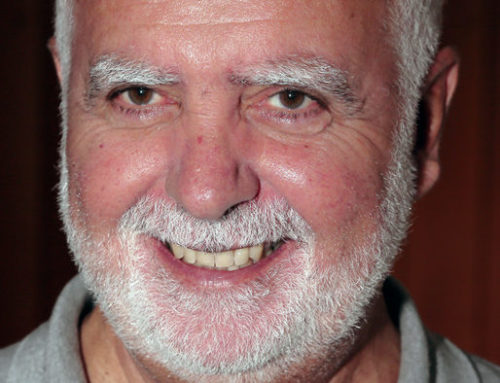Science is incapable of resolving the debate about treatments for childhood gender dysphoria.
If you relied exclusively on the legacy media for the news, you’d never know that, recently, the Catholic Medical Association (USA), along with other faith-and-reason-based medical organizations, issued an open letter to the American Medical Association, American Academy of Pediatrics, and other medical advocates of “gender-affirming care” for minors suffering from gender dysphoria.
In the open letter, the CMA and its co-authors appeal to all medical professionals’ common interest in minimizing suffering and improving care for these children and adolescents through the unbiased appraisal of existing medical evidence regarding causes and treatments, pointing out that “respectful debate and disagreement provide a basis for furthering scientific inquiry.”
Indeed, the development of competing hypotheses among members of the medical community is the very process by which clinical concepts are challenged and either validated or disproven. That such open debate has not been permitted on such a controversial topic damages the scientific process, the trustworthiness of the medical community, and the welfare of the public.
Rather than foster a spirit of dialogue, the medical establishment has anointed a small cabal of subject specialists who issue authoritative treatment guidelines on the gender care of minors based upon their own expert opinion, foreclosing attempts at engaging in a free and open debate. Much as the broader legacy media does not give air time to news such as the counterpoint proffered in the CMA open letter, the editors of prominent journals—including JAMA and the New England Journal of Medicine—stifle viewpoints that deviate from the “gender-affirming” positions they espouse in their pages.Rather than foster a spirit of dialogue, the medical establishment has anointed a small cabal of subject specialists who issue authoritative treatment guidelines on the gender care of minors based upon their own expert opinion.Tweet This
Readers who doubt this are invited to peruse the tables of contents of prominent medical journals for any articles expressing a divergent point of view. I recommend allotting ample time for this exercise, as diverging opinions on gender ideology in medical publications are rarer than hen’s teeth.
Indeed, the unquestioning unanimity among journal authors in defense of the purported benefits provided by social transitioning, puberty blockers, cross-sex hormones, and gender reassignment surgery—based on poor-quality observational studies and expert opinion—is uncharacteristic among medical academics, whose modus operandi usually requires a high degree of scientific rigor before issuing clinical treatment guidelines and recommendations.
As an illustration of the weak state of the science on this topic, a representative example of evidence used to support the use of pubertal suppression in adolescents relies on survey data derived from a data set of 27,000 transgender adults recruited by activist organizations, comparing self-reported mental health outcomes between a cohort of a mere 89 patients who received puberty-blocking medications in adolescence and those who did not.
Weak findings derived from such studies are used to recommend pharmacologic puberty suppression to delay pubertal changes in gender dysphoric adolescents, as a precursor to the initiation of “gender-affirming hormone therapy”—the use of cross-sex hormones to masculinize biological females and feminize biological males.
Contrast this poor quality of evidence with the stringent methodology behind the most recent changes to guidelines regarding the use of baby aspirin to prevent a first heart attack in at-risk adults, which derives its legitimacy, in part, on a systematic review of randomized controlled trials involving over 160,000 patients. While the risks of daily aspirin use are well known—primarily increased risk of bleeding—the long-term dangers of hormonal treatments to adolescents’ physical and mental health are not.
Given the potential for irreversible, enduring effects of hormonal treatments—including harm to cardiovascular health, stature, bone density, and reproductive capacity—the eagerness of medical experts to approve of aggressive interventions which carry a high likelihood of serious injury is perplexing. While disregarding sincere concerns about the risks of proposed interventions, the defenders of guideline author-experts dismiss criticisms of their methodology and conclusions as politically motivated attacks on the vulnerable youth whom they claim to champion.
One of the hallmarks of the concept of “evidence-based medicine” is the willingness to subject one’s claims to query and debate. Adherents to the scientific method must be open to impartially accepting the outcomes of ongoing investigation in the pursuit of truth; sincere scientists are unafraid of defending their hypotheses from legitimate challenge. After all, if investigators are earnestly following the dictates of natural law as revealed by science, then they should not fear scrutiny when it leads to an alternative outcome from that which they anticipated.
In the case of the clinical care of children with gender dysphoria, the authoritative public stances taken by the leaders of the medical and scientific community belie an intense activism hidden under the veneer of science. A tip-off to the partisanship of self-declared experts is their disinhibited public partnership with militant activist organizations in the creation and promotion of purportedly “evidence-based” pronouncements to guide clinicians and families of struggling children in the affirmation of the assumed “gender identity.” Granted, transgender activist groups, such as the Human Rights Campaign and World Professional Association for Transgender Health (WPATH), are free to espouse whatever views they wish and even use partisan maneuvering in pursuit of their aims.
However, unlike these political actors, professional medical organizations are bound by a fiduciary obligation to weigh scientific evidence in impartial service to the public at large. Nakedly partisan activist organizations have commandeered the leadership of leading professional medical associations to further a political and social agenda, making for awkward and unsavory bedfellows.
This is evident as medical societies and publishers jump headlong into the fray on such contentious social issues as this, showing disregard and even contempt for physician-constituents and the general public who hold different views. The blind acceptance of ideology extends to the new norms of language, including recitation of the newfangled idea that a child’s sex is “assigned at birth” rather than genetically determined upon fertilization. Similarly, many publications and journal articles now employ verbal contortionism to avoid such sex-specific words as “women” (read, “people with the capacity for pregnancy”).
One of the greatest frustrations among those who oppose the destruction of the natural order promulgated by the clinical transgenderism movement is the duplicitous nature of its appeal to science to support the unsubstantiated claim that gender fluidity makes it possible for boys to be transmogrified into girls and vice versa—or even to discard the very notion of “boys” and “girls” in favor of a form of uncontestable and limitless sexual self-identity. In fact, such a system of beliefs is scientifically indefensible.
In light of the vast amount of press coverage given to the issue of transgender ideology, it appears that no amount of rational counterpoint will persuade the advocates of “gender-affirming care” to reconsider their position. The unshakable nature of American experts’ views on this topic—even when fissures are forming in the international consensus on the merits of such medical interventions for minors, particularly in Europe—is the hallmark of a stance that is not rooted in science but in a belief system that cannot be known by rational or empirical means.
Proponents of transgenderism have no plausible scientific response to those who dissent from their assertion that human sexuality is fluid. Their unwavering belief in the mutability of human sex and “gender” is a marked departure from the understanding of the dichotomy of the sexes as it has been understood across the ages, across cultures, and across geography. Gender ideologues’ inability to rely on observable truths underscores the fact that the practice of medicine relies on a moral foundation in addition to a scientific one, and it demands of its practitioners the exercise of judgment as to what is in the best interest of the patient.
The reliance on the moral dimension of gender ideology by its advocates in the medical profession creates a silver lining for those opposed to the medical hyper-sexualization of children. While ostensibly appealing to an admittedly unsettled body of scientific work as the basis for its pronouncements, the medical establishment has already deferred to the preeminence of moral judgment in support of its claims about “best practices” for addressing gender dysphoria.
In their urgency to promote radical and irreversible interventions on afflicted children and adolescents, gender experts have asserted ex facto that their compassionate motives override the need for conclusive scientific evidence to support their assertions. By prioritizing the sympathetic affirmation of transgender activists over the lack of a scientific basis for their position, the AAP, AMA, and others have effectively declared their moral imperative is of greater import than empiric evidence.
And yet the question of the moral imperative in the treatment of gender dysphoric children runs much deeper than the avoidance of political conflict. The absence of inquiry into the causes of the rapid rise in the number of self-identified “gender diverse” youth is perhaps more telling than are the prescriptions for how best to care for them. In the face of the tremendous burden of suffering faced by these desperate young people and their families, the apparent omission of investigation into causes and prevention seems oddly uncharacteristic for academic medicine.
A large part of the problem is that, under the guise of compassion, the medical establishment—in conjunction with activist-ideologues—continues to paint “gender fluidity” as not just another variant of the human condition but as an aspirational goal to be celebrated. Thus, the question of how to prevent the suffering of affected minors by reducing the number who ascribe to the new gender ideology has been declared an intolerant question. A large part of the problem is that, under the guise of compassion, the medical establishment—in conjunction with activist-ideologues—continues to paint “gender fluidity” as an aspirational goal to be celebrated.Tweet This
One could be forgiven for concluding the charge of intolerance is insincere when it is made by the very same scientists and clinicians who are in the business of consigning these fêted young people to lifelong medicalization and dependence on a constant supply of hormones, laboratory surveillance, cosmetic surgeries, and wardrobe accoutrements in order to maintain the façade of gender fluidity. This would seem to offer an explanation for why the gender medicine experts choose instead to militate for mandatory insurance payment for interventions offered in their growing numbers of gender-affirming clinics rather than consider ways to stem the tide of despair and isolation that plagues their swelling adolescent patient base.
If medicine involves the art of weaving science and morals, then the root question we need to address most urgently in order to stop the contagion of gender ideology is how our society—and our medicine—has become so poisonous that it allowed for the implantation of a rampant, self-destructive impulse into our youth. Perhaps the CMA letter was too generous to assume the benevolence of medical associations that promote gender ideology.
There is but one way to find out; we need an honest debate based on moral medicine and authentic human anthropology—not a skirmish over levels of scientific evidence—to understand how the medical establishment allowed gender ideology to transition them from trusted Hippocratic professionals to self-interested political activists.
- James O. Breen, M.D.Dr. James O. Breen is a family physician and faculty member in graduate medical education in Fort Myers, Florida. Dr. Breen is a member of the Southwest Florida Guild of the Catholic Medical Association.








